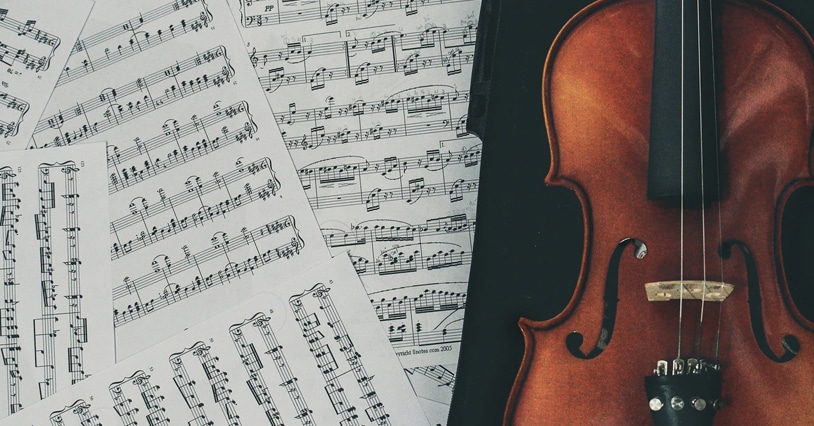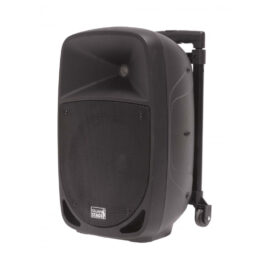
Welcome to part two of our free, four-part songwriting course. In part one, we covered the circle of fifths and gave you some additional reading on triads and the chordal harmonic theory. Today, we’re going to take a look a scale construction, and then move onto the modes.
If you haven’t worked through part one of this lesson series, we suggest you start there. If, however, you are here for the modes, and not for the songwriting course, this lesson is fully self-contained.
The Major Scale
Before you can understand the modes, we’re going to take a quick look at how the major scale is constructed. If you already know this, then feel free to skip to the next section.
In Western music, our smallest interval, or movement between two notes, is a semitone. We call the interval from C to C# or from B to C a semitone. To play a semitone, you move from one fret on the guitar to the fret directly next to it.
When you take a double step, say from C to D, or from B to C#, you are moving a tone.
The major scale has the formula of Tone – Tone – Semitone – Tone – Tone – Tone – Semitone. Using that formula, we can work out all the major scales.
Let's Take a Look at the D Major Scale
D (+a tone gives us) E
E (+a tone gives us) F#
F# (+a semitone gives us) G
G (+a tone gives us) A
A (+a tone gives us) B
B (+a tone gives us) C#
C# (+a semitone gives us) D
An excellent tip to remember is that every scale starts and ends on the same note. So if you start on D and end on C – something has gone wrong.
Another way to check if your scale is correct is to see if you’ve used all the base notes of the musical alphabet. Check to see if you’re using all the letters from A to G. If you are using all the notes, and you start and end on the same note, there is a good chance you got it right!
The First Mode
The first mode we’re going to look at is the Ionian mode. The best thing is that you already know the Ionian mode! Ionian is another way to say “major scale”. That means that every time you’ve played a major scale, you played the Ionian mode. Good work.
Now Onto the Rest of the Modes
Now that you’re comfortable with the Ionian mode, let’s move onto the other modes.
In a nutshell (and don’t write this on a theory exam, this is an oversimplified explanation), the modes are when we play the major scale, but don’t start on the first note. We name the mode after its starting note.
Modal Diagrams for Guitar
Ionian: 1 – 2- 3 – 4 – 5 – 6 – 7 – 8(1)
Dorian: 2 – 3 – 4 – 5 – 6 – 7 – 1 – 2
Phrygian: 3 – 4 – 5 – 6 – 7 – 8 – 1 – 2 – 3
Lydian: 4 – 5 – 6 – 7 – 8 – 1 – 2 – 3 – 4
Mixolydian: 5 – 6 – 7 – 8 – 1 – 2 – 3 – 4 – 5
Aeolian (minor scale): 6 – 7 – 8 – 1 – 2 – 3 – 4 – 5 – 6
Locrian: 7 – 8 – 1 – 2 – 3 – 4 – 5 – 6 – 7
Now that you’ve seen the structure let’s take a look at the modes in the key of D.
Ionian: D – E – F# – G – A – B – C# – D
Dorian: E – F# – G – A – B – C# – D – E
Phrygian: F# – G – A – B – C# – D – E – F#
Lydian: G – A – B – C# – D – E – F# – G
Mixolydian: A – B – C# – D – E – F# – G – A
Aeolian: B – C# – D – E – F# – G – A – B
Locrian: C# – D – E – F# – G – A – B – C#
Modal Tonalities
Each mode will have a different emotional feel to it. So if you want your solo to sound happy, play the Ionian mode. If you want your solo to sound melancholic, play the Dorian mode.
Ionian – Happy and Bright
Dorian – Melancholic
Phrygian – Exotic, Middle Eastern, Jewish
Lydian – Ethereal, dreamy, futuristic
Mixolydian – Bluesy Rock
Aeolian – Sentimental, tragic
Locrian – Very dark and unstable
Shop Our Latest Arrivals
-
- Guitar & Bass, Guitar Amps
Boss Katana-50 MkII Guitar Amp
-
R9,975R6,985FREE DELIVERY - Select options
-
Request Stock
- Out of Stock
- DJ Portable Speakers, Live Sound, Portable PA Systems
Italian Stage FR10AW Portable Active Speaker With Battery
-
R3,895R3,310FREE DELIVERY - Select options
-
-
Request Stock
- Out of Stock
- Orchestral Instruments, Stringed Orchestral
Caraya MV-004 1/4 Size Violin
-
R2,245R1,620FREE DELIVERY - Select options
-











